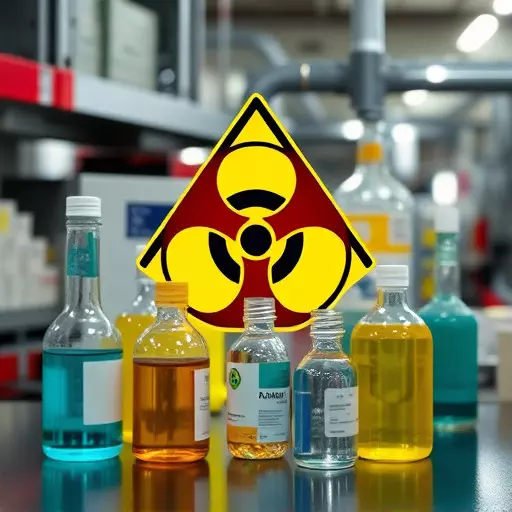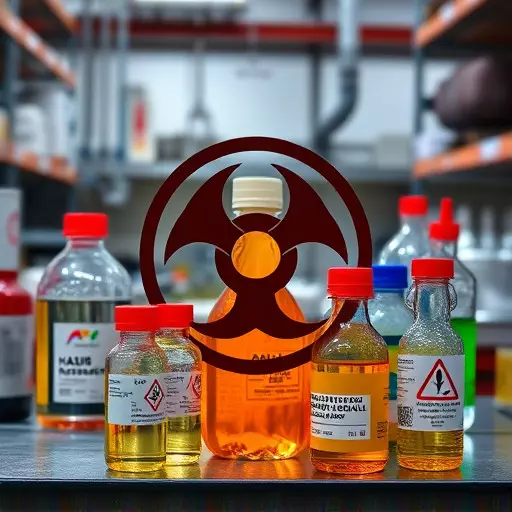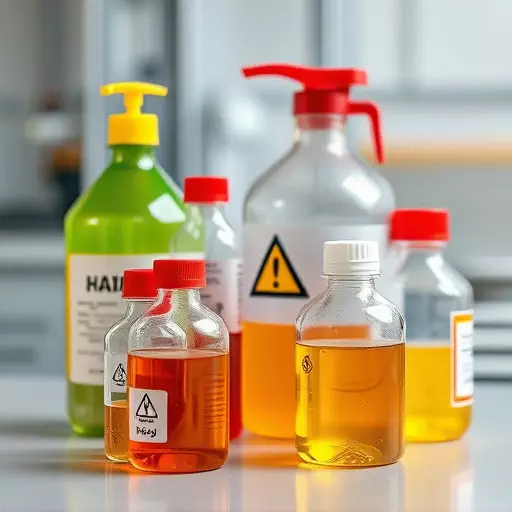Workplace air quality is a critical aspect of industrial hygiene, focusing on managing risks from chemical exposure by assessing and controlling airborne contaminants. Robust protocols begin with thorough hazard identification to pinpoint contamination sources, enabling effective risk management through engineering controls, administrative measures, and personal protective equipment. Regular testing and monitoring are essential for compliance and maintaining a safe working environment. This text emphasizes chemical exposure risk management and industrial hygiene protocols, highlighting hazardous material identification as a foundational step in mitigating worker risks and enhancing workplace safety.
Workplace air quality is a critical component of employee health and safety, particularly in industrial settings. This article delves into essential aspects of maintaining a safe environment, focusing on industrial hygiene protocols and hazard identification. We explore the basics of understanding workplace air quality, highlighting the significance of chemical exposure risk management. By identifying hazardous materials, organizations can implement effective strategies to mitigate risks and ensure compliance with safety standards. Learn best practices for conducting air quality testing and fostering a culture of safety.
- Understanding Workplace Air Quality: The Basics of Industrial Hygiene Protocols
- Identifying Hazardous Materials: A Critical Step in Risk Management
- Implementing Effective Chemical Exposure Risk Management Strategies
- Best Practices for Conducting Air Quality Testing and Maintaining Safe Work Environments
Understanding Workplace Air Quality: The Basics of Industrial Hygiene Protocols

Workplace air quality is a critical aspect of industrial hygiene that involves understanding and managing risks associated with chemical exposure. It encompasses the assessment and control of airborne contaminants, including volatile organic compounds (VOCs), particulate matter, and other hazardous materials present in the work environment. By implementing robust industrial hygiene protocols, organizations can effectively mitigate potential health risks to employees.
The process begins with thorough hazard identification, which involves assessing the operations, processes, and materials used in the workplace to pinpoint sources of contamination. This step is crucial for effective risk management, as it enables the implementation of appropriate control measures. Once hazardous materials are identified, organizations can employ various strategies to minimize exposure, such as engineering controls (e.g., ventilation systems), administrative controls (e.g., work practices and procedures), and personal protective equipment (PPE). Regular air quality testing and monitoring play a pivotal role in ensuring compliance with occupational health standards and maintaining a safe working environment.
Identifying Hazardous Materials: A Critical Step in Risk Management

Implementing Effective Chemical Exposure Risk Management Strategies

Best Practices for Conducting Air Quality Testing and Maintaining Safe Work Environments



